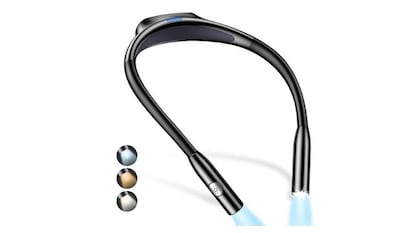Cells that treat blood vessels
One major medical challenge today is the vast number of cardiovascular diseases and disorders that directly depend on the underlying heart or organ tissue vascularity. In an aging and relatively sedentary population, we urgently need new methods to effectively stimulate the formation of blood vessels. Such methods would require a truly innovative approach to improve the quality of life, particularly in patients who can not be treated with today’s surgical revascularization technology.
In our laboratory, we are working on a technique called cell therapy. This therapy uses specific kinds of cells that have beneficial therapeutic functions introduced into the patient by injection. In the case of standard pharmacological therapies, chemical compounds are used as drugs (for example, aspirin), whereas in the case of cell therapy, the cells are the therapeutic agents.
A specific type of cell is found lining the endothelium or the inner layer of all blood vessels, large and small — these are called endothelial cells. These cells play a crucial role in keeping the cardiovascular system stable and healthy. Abnormalities in their function may lead to severe complications and vascular disorders. Furthermore, blood vessel formation is fundametal in normal tissue repair processes like wound healing or tissue regeneration after a heart attack and can occur either through two processes — vasculogenesis or angiogenesis.
Vasculogenesis includes the formation of miniscule vessels or capillaries from primitive cells, the so-called angioblasts or endothelial progenitor cells (EPCs), which are mobilized from the bone marrow and are able to “home in” and repair disrupted or poorly oxygenated (ischemic) tissue. Whereas angiogenesis is the formation of blood vessels from preexisting ones. Angiogenesis is based on the division and migration of fully matured endothelial cells, which are stimulated by various factors (for example, vascular endothelial growth factor). Both processes are very important and can participate in tissue regeneration simultaneously. To treat patients, we can stimulate both processes using cell therapy.
Many diseases are related to the poor condition of blood vessels or insufficient tissue oxygenation. The main factor responsible for impaired wound healing in diabetes, the development of coronary artery disease and problems with tissue regeneration after a heart attack is the impairment of endothelium function and inhibition of vascularization. Moreover, studies show the number of EPCs in the blood correlates with a risk of cardiovascular disorders, such as diabetes, hypercholesterolaemia and hypertension. Such high-risk patients who receive autologous EPCs (harvested from the patient who is then later treated with them) — a common technique used in cell therapy — might have a diminished regenerative potency. Such impaired EPCs functioning in pathological states may be caused by the lack of resistance to unfavourable microenvironment conditions. It so happens that normal EPCs possess huge amounts of antioxidative enzymes, which are responsible for scavenging of dangerous reactive oxygen species. However, EPCs derived from cardiovascular patients may have lower amounts of these enzymes, and as a consequence, are not as resistant to disadvantageous conditions and the intended therapeutic cells are not able to play their role or function efficiently.
In such cases, we can combine cell therapy with gene therapy. This means that autologous EPCs from cardiovascular patients can be supplied with the genes, which would improve their function and resistance to unfavourable microenvironment conditions. This strategy is currently being tested in our laboratory.
Today, the effectiveness and safety of cell therapy with EPCs are intensively examined, both in laboratory research and clinical trials. Many investigations demonstrate the beneficial function of these cells in the cardiovascular system. We hope that cell therapy will be widely used in the clinic soon, not only in the form of bone marrow transplantation, which has been done efficiently for years, but also in the treatment of cardiovascular, neurodegenerative, metabolic and other disorders.
Tu suscripción se está usando en otro dispositivo
¿Quieres añadir otro usuario a tu suscripción?
Si continúas leyendo en este dispositivo, no se podrá leer en el otro.
FlechaTu suscripción se está usando en otro dispositivo y solo puedes acceder a EL PAÍS desde un dispositivo a la vez.
Si quieres compartir tu cuenta, cambia tu suscripción a la modalidad Premium, así podrás añadir otro usuario. Cada uno accederá con su propia cuenta de email, lo que os permitirá personalizar vuestra experiencia en EL PAÍS.
¿Tienes una suscripción de empresa? Accede aquí para contratar más cuentas.
En el caso de no saber quién está usando tu cuenta, te recomendamos cambiar tu contraseña aquí.
Si decides continuar compartiendo tu cuenta, este mensaje se mostrará en tu dispositivo y en el de la otra persona que está usando tu cuenta de forma indefinida, afectando a tu experiencia de lectura. Puedes consultar aquí los términos y condiciones de la suscripción digital.
Archivado En
Últimas noticias
Trump asegura que Venezuela le entregará hasta 50 millones de barriles de petróleo
El polvo dentro de los hogares en México es más tóxico que el del exterior y contiene metales pesados
Las autoridades estadounidenses retienen a una diputada de Morena con 800.000 pesos en efectivo
La Operación Frontera Norte detiene a 10.000 personas en menos de un año
Lo más visto
- Lotería del Niño de 2026 | El primer premio es para el 06703
- Estados Unidos amenaza con tomar Groenlandia por la fuerza
- Últimas noticias de Venezuela tras la detención de Maduro, en directo | Delcy Rodríguez sostiene que ningún agente externo gobierna Venezuela
- El abogado que logró la liberación de Julian Assange por el caso Wikileaks representará a Maduro en el juicio por narcoterrorismo en Nueva York
- Xi Jinping se pronuncia de forma velada sobre Venezuela: “Las prácticas de intimidación hegemónica afectan gravemente al orden internacional”




























































